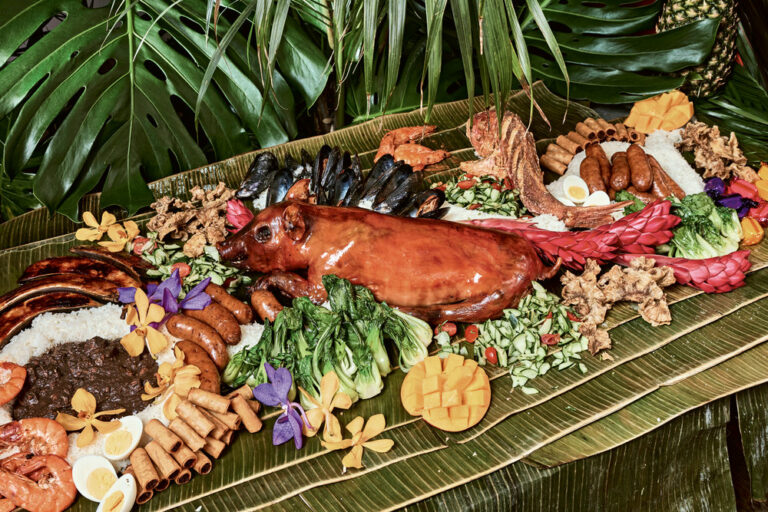Introduction: The Richness of Filipino Cuisine
Filipino cuisine is known for its rich flavors and diverse ingredients, making it one of the most unique and exciting cuisines in the world. The country’s history and cultural diversity have played a significant role in shaping the Filipino palate and culinary traditions.
With over 7,000 islands, the Philippines is home to a wide range of natural resources and regional cuisines. From the sour and savory flavors of Sinigang to the sweet and sticky texture of Bibingka, Filipino cuisine reflects the country’s vibrant culture and history.
Indigenous Roots: The Influence of Pre-colonial Times
The indigenous peoples of the Philippines, such as the Aeta and Igorot tribes, have a long history of agriculture and fishing. They relied on local ingredients such as rice, root crops, and seafood to create a simple yet flavorful cuisine.
Many of these dishes have survived to this day, such as Adobo, a dish made with vinegar, soy sauce, and garlic, which was originally used to preserve meat. Other popular dishes include Kinilaw, a raw fish salad infused with vinegar and spices, and Sinigang, a sour soup made with tamarind.
Colonial Era: Spanish and American Influences on Filipino Food
The Philippines was colonized by Spain for over 300 years, and this period had a significant impact on Filipino cuisine. Spanish influences can be seen in dishes such as Paella and Callos, which were introduced during this time. Spanish ingredients such as chorizo, paprika, and saffron were also incorporated into Filipino dishes.
After Spain, the Philippines was colonized by the United States, which introduced new ingredients such as canned goods and processed foods. American fast food chains like McDonald’s and KFC have also become popular in the Philippines, influencing the country’s fast-food culture.
Chinese and Southeast Asian Influences on Filipino Cuisine
The Philippines has a long history of trade and cultural exchange with China and other Southeast Asian countries. Chinese influences can be seen in dishes such as Lumpia, a spring roll filled with vegetables and meat, and Siopao, a steamed bun filled with meat and vegetables.
Southeast Asian flavors have also influenced Filipino cuisine, with dishes such as Bagoong, a fermented shrimp paste, and Kare-Kare, a peanut-based stew that is similar to Indonesian Gado-gado.
Fusion Cuisine: The Blend of Different Culinary Traditions
Filipino cuisine is known for its fusion of different culinary traditions, resulting in unique and flavorful dishes. One example is Sisig, a dish made with chopped pig’s head and liver, which was originally a Kapampangan dish but has since become popular throughout the country.
Another example is Jollibee, a Filipino fast-food chain that offers a blend of Filipino, American, and Chinese flavors, such as the Jolly Spaghetti and Chickenjoy.
Conclusion: The Significance of Cultural Diversity on Filipino Cuisine
Filipino cuisine is a reflection of the country’s rich cultural heritage and diversity. From indigenous roots to foreign influences, Filipino cuisine has evolved into a unique blend of flavors and ingredients.
The significance of cultural diversity on Filipino cuisine cannot be overstated, as it has allowed for a wide range of culinary traditions to coexist and flourish. Filipino cuisine is a testament to the country’s resilience and adaptability, and it continues to evolve and inspire chefs and foodies around the world.










